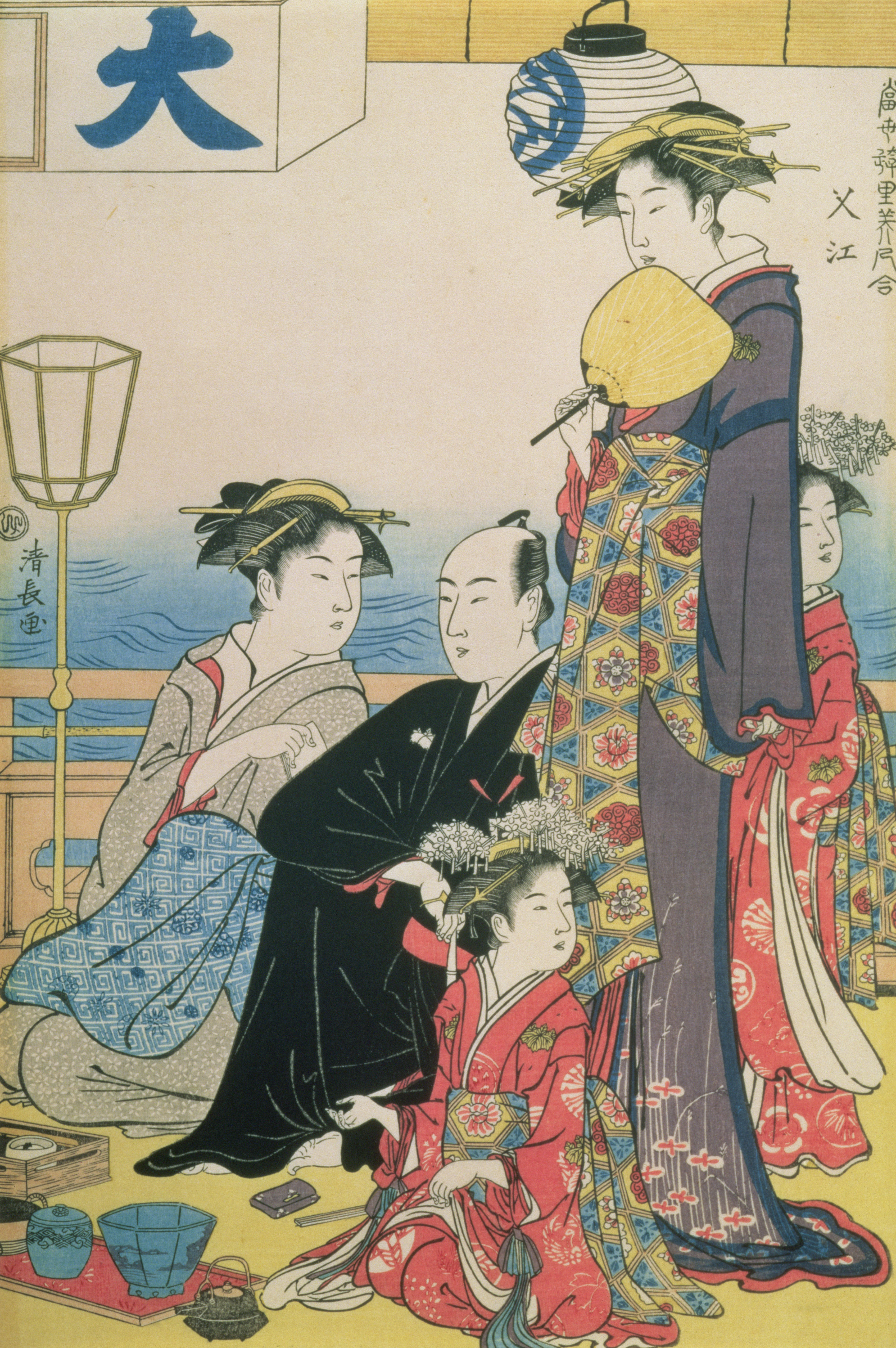For Japanese daimyo, Tokugawa-era Edo was a gilded prison. On the one hand, the city boasted an astonishing variety of establishments devoted to providing urban elites with every possible pleasure, luxury, and form of diversion. Providing he had the money to pay for his desires, a daimyo living in Edo could indulge his every whim. On the other hand, the alternate residence system required all daimyo to live in Edo every other year and to leave their families there. Thus, the decision to maintain a residence in Edo, with all the costs that entailed, was not a choice for daimyo, but a legal requirement that resulted in the eventual bankruptcy of many once-powerful daimyo families. Think about these issues as you examine this eighteenth-century woodblock print of a wealthy Japanese man surrounded by “women of the gay quarters” of Edo. In what ways might this image comment on the effects of city life on elite Japanese men?

Women of the Gay Quarters, right-hand panel of a diptych (color woodblock print), Kiyonaga, Torii (1752–1815)/Pushkin Museum, Moscow, Russia/Bridgeman Images.
